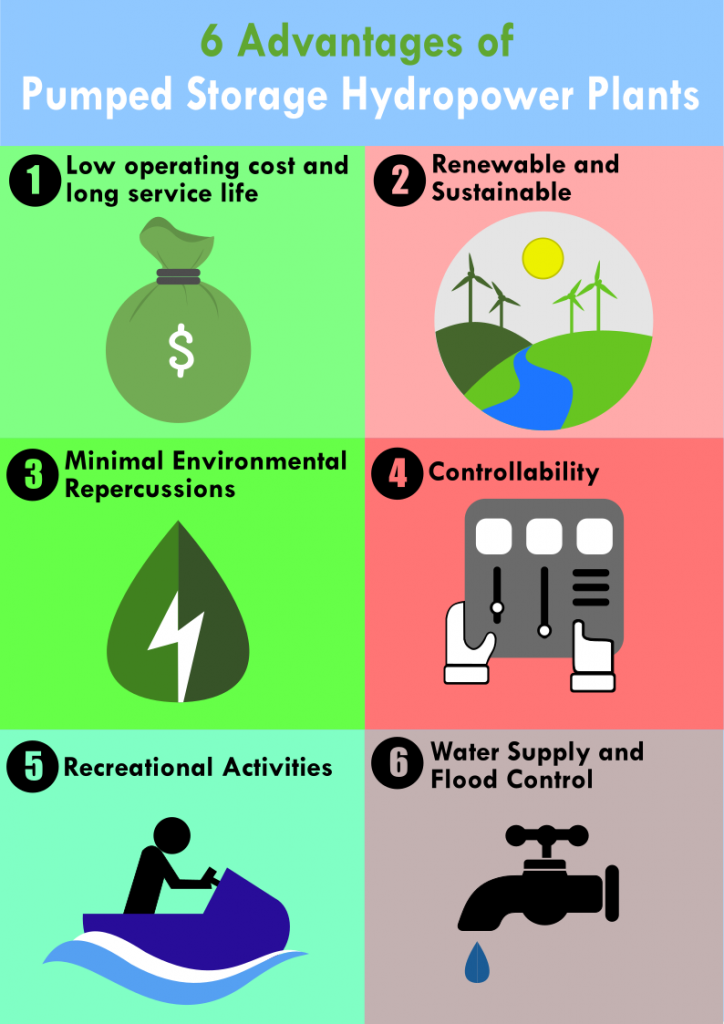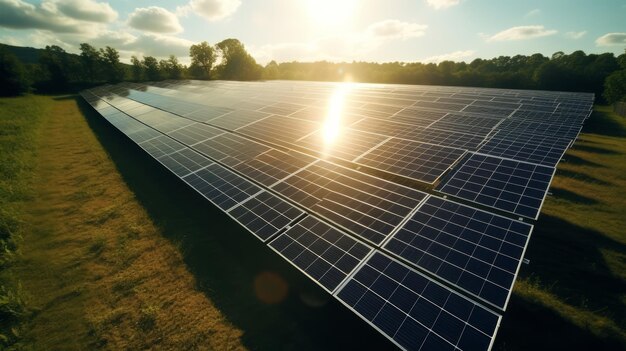
Hydropower: Unlocking the Power of Water – Benefits, Challenges, and Its Role in Our Energy Future
In our global quest for sustainable energy, one of the oldest and most reliable sources continues to play a pivotal role: hydropower. Often called "water energy" or "hydroelectricity," it harnesses the natural movement of water to generate electricity. From ancient watermills to massive modern dams, humanity has long understood the incredible power contained within flowing rivers.
But what exactly is hydropower? How does it work? And what are the real benefits and challenges of relying on this mighty force of nature to power our homes and industries? Let’s dive in and explore the fascinating world of water energy.
What Exactly is Hydropower? Understanding Water Energy
At its simplest, hydropower is the process of converting the energy of moving water into electricity. Think of it like a giant water wheel connected to a generator.
Here’s a breakdown of how a typical hydroelectric power plant works:
- The Water Source: It all begins with a reliable source of water, usually a river.
- The Dam: A large dam is built across the river, creating a reservoir (a large artificial lake) behind it. This reservoir stores vast amounts of water and also creates a significant "head" – a difference in water level between the reservoir and the river downstream.
- Intake and Penstock: Water from the reservoir is directed through an intake structure and then flows down a large pipe called a penstock.
- Turbine: As the water rushes down the penstock, its immense pressure and speed spin a large wheel called a turbine. Think of a propeller or a fan, but designed to be spun by water.
- Generator: The spinning turbine is connected to a generator. This generator is a device that converts mechanical energy (from the spinning turbine) into electrical energy. It works on the same principles as the generator in a bicycle light, just on a much, much larger scale.
- Transmission Lines: The electricity generated is then sent through transmission lines to homes, businesses, and industries.
- Outflow: The water, having done its job, flows out of the power plant and continues its journey downstream in the river.
Key Concept: The Water Cycle
Hydropower is considered a renewable energy source because it relies on the continuous water cycle. Water evaporates from oceans and land, forms clouds, falls as rain or snow, and flows back into rivers and eventually oceans. This endless cycle ensures a constant supply of water to power hydroelectric plants.
The Mighty Benefits of Hydropower: Why We Love Water Energy
Hydropower offers a compelling array of advantages that make it a cornerstone of clean energy strategies worldwide.
1. Truly Renewable and Sustainable
- Endless Supply: As long as the water cycle continues, there will be water to generate electricity. Unlike fossil fuels (coal, oil, gas) which are finite resources, water is continuously replenished.
- No Fuel Burning: This means no mining, drilling, or transporting fuel, which reduces the environmental impact associated with those activities.
2. Clean and Low-Emission Energy
- Zero Air Pollution: Unlike power plants that burn fossil fuels, hydroelectric plants do not produce greenhouse gases (like carbon dioxide) or other harmful air pollutants during operation. This makes them crucial in the fight against climate change and air pollution.
- Reduced Carbon Footprint: By replacing fossil fuel power, hydropower significantly lowers a country’s overall carbon emissions.
3. Reliability and Dispatchability
- On-Demand Power: One of hydropower’s greatest strengths is its ability to be "dispatched" or turned on/off very quickly. Operators can control the flow of water through the turbines, meaning they can ramp up or decrease electricity production almost instantly to meet demand fluctuations.
- Grid Stability: This "on-demand" nature makes hydropower excellent for balancing the electricity grid, especially when paired with intermittent renewable sources like solar and wind power, which depend on weather conditions.
- Predictable Output: Unlike solar (which needs sunlight) or wind (which needs wind), the output from a well-managed hydro plant is highly predictable, based on water levels in the reservoir.
4. Cost-Effective in the Long Run
- Low Operating Costs: While the initial construction costs for dams and power plants can be very high, once built, the operating and maintenance costs are relatively low. There’s no fuel to buy or transport.
- Long Lifespan: Hydroelectric power plants have incredibly long operational lifespans, often exceeding 50 to 100 years, providing decades of clean energy.
- Stable Energy Prices: With no fuel costs, the price of electricity generated by hydropower is more stable and less subject to the volatile global energy markets.
5. Multi-Purpose Infrastructure
- Flood Control: Dams built for hydropower often serve a dual purpose of controlling floods downstream, protecting communities and agricultural land.
- Water Supply: Reservoirs can store water for drinking, irrigation (watering crops), and industrial uses, providing a vital resource for communities.
- Recreation: Many reservoirs become popular spots for boating, fishing, swimming, and other recreational activities, boosting local tourism.
- Navigation: In some cases, dams with locks can improve river navigation for shipping.
The Challenges and Concerns: The Other Side of the Coin
Despite its many advantages, hydropower is not without its significant challenges and drawbacks, which must be carefully considered during planning and operation.
1. Environmental Impact
- Ecosystem Disruption: Building a large dam fundamentally alters the natural flow of a river and its ecosystem. This can include:
- Habitat Loss: Flooding vast areas to create reservoirs submerges forests, farmlands, and existing wildlife habitats, forcing animals to relocate or perish.
- Changed Water Temperature and Chemistry: Water released from the bottom of a deep reservoir can be much colder and have different oxygen levels than the natural river, negatively impacting downstream aquatic life.
- Sediment Trapping: Dams block the natural flow of sediment (silt, sand, gravel) downstream. This sediment is crucial for maintaining riverbanks, deltas, and providing nutrients for ecosystems. Without it, riverbeds can erode, and downstream deltas may shrink.
- Fish Migration Barriers: Dams create physical barriers that prevent fish (like salmon and trout) from migrating upstream to their spawning grounds or downstream to the ocean. While "fish ladders" or "fish elevators" are attempts to mitigate this, they are not always 100% effective.
- Greenhouse Gas Emissions (from Reservoirs): While operational plants don’t emit GHGs, the decomposition of submerged organic matter (plants, trees) in new reservoirs can release methane, a potent greenhouse gas. This is particularly a concern in tropical regions.
2. Social and Cultural Impact
- Population Displacement: Building large dams often requires flooding vast areas, leading to the forced relocation of communities, including indigenous peoples, who have lived in those areas for generations. This can cause immense social disruption, loss of cultural heritage, and economic hardship.
- Loss of Farmland: Valuable agricultural land along riverbanks can be submerged, impacting food security and local economies.
3. Dependence on Water Availability and Climate Change
- Drought Vulnerability: Hydropower relies on consistent rainfall and river flow. Prolonged droughts, exacerbated by climate change, can significantly reduce water levels in reservoirs, leading to reduced electricity generation or even plant shutdowns. This makes regions heavily reliant on hydropower vulnerable during dry periods.
- Extreme Weather: Increased frequency of extreme rainfall events can lead to reservoir overflow and potential dam safety concerns, while prolonged dry spells reduce water availability.
4. High Upfront Costs
- Massive Investment: While operating costs are low, the initial capital investment required to design, construct, and implement large-scale hydroelectric projects is enormous. This can be a major financial barrier for developing nations.
- Long Construction Times: Building large dams and power plants can take many years, sometimes decades, from planning to completion.
5. Geographical Limitations
- Specific Site Requirements: Hydropower plants require specific geographical conditions: a reliable river with a significant drop in elevation (a "head") and suitable geology for dam construction. Not all regions have these ideal conditions.
- Limited Untapped Potential: In many developed countries, most of the best and most accessible river sites have already been developed, limiting future large-scale expansion.
6. Dam Safety Concerns
- Potential for Failure: Although rare due to stringent engineering standards, dam failures can have catastrophic consequences, leading to massive floods, loss of life, and widespread destruction downstream.
The Future of Hydropower: A Balancing Act
Despite the challenges, hydropower remains a critical component of the global energy mix. Its reliability and clean nature are invaluable, especially as the world transitions away from fossil fuels.
The future of hydropower is likely to involve:
- Modernization and Upgrades: Many existing hydropower plants are decades old. Investing in modernizing turbines, generators, and control systems can significantly increase their efficiency and output without building new dams.
- Small Hydropower: Focusing on smaller "run-of-river" projects that don’t require large dams and reservoirs can minimize environmental and social impacts, making hydropower accessible in more locations.
- Addressing Environmental Concerns: Continued research and implementation of improved fish passage technologies, sediment management strategies, and environmentally sensitive dam operations are crucial.
- Pumped-Storage Hydropower: This is a specialized type of hydro that acts like a giant battery. It uses excess electricity from other sources (like wind or solar during off-peak hours) to pump water uphill to a reservoir. When electricity is needed, the water is released back downhill to generate power. This system is key for grid stability and integrating more intermittent renewables.
- Integrated Water Management: Future projects will increasingly need to be part of broader water management strategies that consider all water uses (drinking, irrigation, recreation, environment) in a holistic way.
Conclusion: A Powerful, Complex Solution
Hydropower is a fascinating and powerful energy source that has served humanity for centuries. Its ability to provide clean, reliable, and on-demand electricity makes it an indispensable asset in our fight against climate change and our quest for energy independence.
However, its significant environmental and social challenges, particularly those associated with large-scale dam construction, cannot be ignored. The key lies in finding a balance: maximizing the benefits of existing infrastructure, investing in less impactful small-scale projects, and continuously developing innovative solutions to mitigate the negative consequences.
As the world continues to shift towards a sustainable energy future, hydropower will undoubtedly remain a vital part of the puzzle, a testament to the enduring power of water.



Post Comment